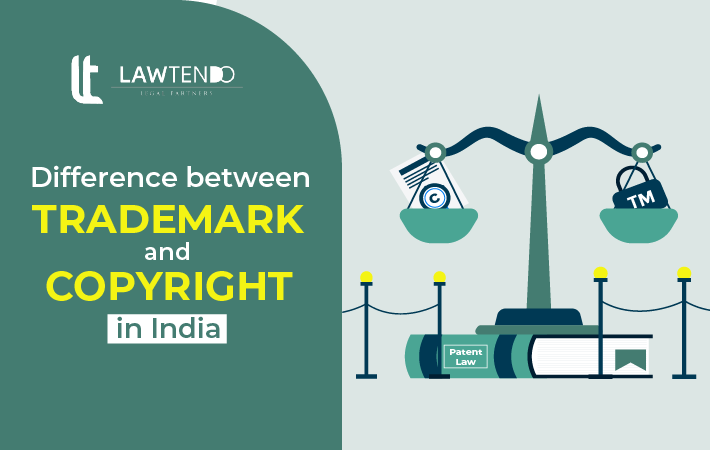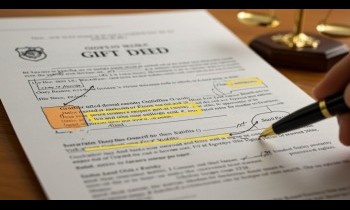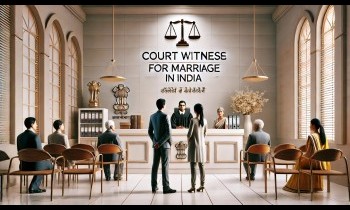What is Difference between Trademark and Copyright?

Date : 15 Feb, 2021
Post By Advocate Gaurav Shukla
There are various kinds of Intellectual Property Rights(IPR) such as Patent, Copyright, Trademark, Geographical Indications, Plant Varieties, Industrial Designs, and so on. IPR acts as an important source for Entrepreneurs as they can invest their resources in these privilege-giving assets. This, in turn, can help them to come up with more creative, original, and out-of-the-box ideas. Copyright is one of the most important Industrial Property rights. It is one of its kind and selective. It is generally granted to someone for producing any artistic, dramatic, literacy, musical words. Sound broadcasting and Cinematographic films are also given this benefit. Trademark is also another important right covered under this act. Trademark serves the purpose of helping customers identify a particular product because people know a particular product based on its trademark. So, trademarks are important for any company and its products. For eg., PEPSI and PHILIPS are some of the well-known trademarks. Consult the best lawyer online So, is there any difference between the two or are they the same? Let us have a look at it in detail: Are trademark and copyright the same thing? So, this is a common question that arises in anyone’s mind but the fact is that copyright and trademark are different rights. Also, both of these rights are granted different protections. A trademark is basically an ambassador of your product. It is a distinctive type of mark that distinguishes between a range of products of a particular brand. It can be in a form of words, letters, numerals, pictures and so on which shall represent a particular product. The manufacturers use the trademark to promote their products. A copyright is an incorporeal right, which is an exclusive and unique right that is available to any original work in terms of any artistic, dramatic, literate works and also films, broadcasting, sound, and so on. The second you make your creative work, copyright security starts. Creation happens when music, or any artistic work, or any kind of cinematography film is made, set to paper, or in any such case. So now, let us see what sort of protection is granted under copyright and trademark. Protection under Trademark Trademarks are governed under the Trademarks Act, 1999. Protection is granted under the trademarks for discontinuing to use such a similar type of mark that resembles the previous mark. A Registered Trademark user has an option to utilize the mark and to keep others from utilizing the same in a manner that would create a probability of turmoil about the starting point of the products or administrations. One must conduct a deep Trademark search in order to see whether the trademark is already in use or not. Such has to be done before its registration in order to avoid any kind of infringement in the future. Hence, Trademark acts as an effective tool to create a distinct brand image of one’s own product in this market full of competition.
Protection under Copyright As discussed earlier, copyright is granted only for the distinct and original work of the author. It is granted for such works that are artistic and creative in nature. These rights are exclusive and available only to the author or creator to restrict anyone from copying his work. There is also a DMCA ie Digital Millennium Copyright Act enacted by the United States of America. It condemns the cremation and scattering of innovation, gadgets, or administrations expected to bypass quantifies that control admittance to copyrighted works. In other words, it grants criminal liability for copyright infringement. Registration Process 1.For Copyright The original creator of such artistic work shall apply for copyright under section 44 to 50 of the act. The process is as follows: The application is made on Form 14; The original author should sign the application and where relevant should be embraced by an Attorney and recognized by the council. The form should be accompanied by the prescribed fees. After submission, if no questions are raised within 30 days, the application will be analyzed to ensure that it is genuine and is error-free. If it is error-free, the registrar shall initiate the registration process and a copy will be recorded at the copyright office to be entered in the register of copyrights. On the receipt of any objection, the registrar will create a show-cause notice for such an issue and schedule a meeting questioning such issues with them. The registrar shall after studying all the necessary reasons stated by the authors during the hearing, shall take a decision to register a copyright or not. 2.For Trademark The first step in such registration is conducting appropriate trademark research. After much research, if the genuineness and uniqueness of such a mark are proved, then one must apply for its registration on the website of the online filing portal of the trademark office. Along with this form, a proper image of such mark shall be attached in the manner prescribed on the website and it should be backed by a self-declaration for having a prior usage of such mark. The trademark office requires proof of earlier use in India, which can be a receipt given to a client containing the imprint or logo for which the trademark security is looked for. Difference between Trademark and Copyright Should I copyright or trademark my logo? One should apply for a trademark in the case of the logo and not for copyright. As discussed earlier, a logo represents a brand image. And hence it is important to preserve and maintain such a brand image. Copyright provides only the protection for the original artwork and does not provide security to the brand by securing its logo. Whereas trademark provides protection for any kind of symbol, sign, numerical, image, alphabets, and so on used for the logo. Hence, it provides protection for the logo in all aspects. What does a trademark protect? After registration of a trademark, the owner gets personal and exclusive rights to prevent anyone from using the particular symbol or logo which represents its brand. Hence, protective rights are made available against the person using similar marks and thus the original creator is granted protection against such infringement of the trademark. But, the other person can acquire the right to use the logo or trademark after taking proper permission of the creator and payment of the amount prescribed. Get in touch with the best trademark lawyer Can I use TM without registering? Basically, the word ™ is used for representing a particular logo of a particular brand. It is basically an indicator or a way to inform that such a logo has been used by a particular owner. In India, one can use the word ™ only when the registration is in progress. After the registration is complete, the letter ‘R’ is used to indicate a registered trademark. Is it illegal to place TM on a logo? Trademarks with the letters TM is only a representation that an organization is using that particular mark. If again a ™ is used on a similar mark, it is illegal as ™ represents that a particular trademark has already been applied for registration. Hence, it is not recommended to use ™ on a logo that is similar to a logo already applied for registration. Conclusion Intellectual Property Rights are those rights that are derived with respect to human intellect and creativity. They are basically just those rights that can be annexed to certain objects yet there can be infinite replicas of the same at any place even at remote places across the globe. But, the rights do not vest in those replicas but they vest with only the original author or creator. Those who have made a replica of that particular property do not have any rights vested in them other than having a fair use of that property. Every act made by the legislation always benefits the original creator or the author of the work. However, the act also has put up certain restrictions for the use of such work. Such as there is a time specified for the ownership of the right, compulsory license, and so on in some of the Intellectual Property Rights. Eg. In the event that the Act determines that the span of a specific property will vest with the creator till he is alive and also additional 40 years, then. 40 years from the date of his demise, the right is exhausted.





